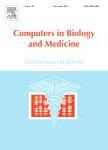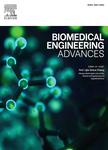版权所有:内蒙古大学图书馆 技术提供:维普资讯• 智图
内蒙古自治区呼和浩特市赛罕区大学西街235号 邮编: 010021
T=题名(书名、题名),A=作者(责任者),K=主题词,P=出版物名称,PU=出版社名称,O=机构(作者单位、学位授予单位、专利申请人),L=中图分类号,C=学科分类号,U=全部字段,Y=年(出版发行年、学位年度、标准发布年)
AND代表“并且”;OR代表“或者”;NOT代表“不包含”;(注意必须大写,运算符两边需空一格)
范例一:(K=图书馆学 OR K=情报学) AND A=范并思 AND Y=1982-2016
范例二:P=计算机应用与软件 AND (U=C++ OR U=Basic) NOT K=Visual AND Y=2011-2016



Wind tunnel experiments incorporating factors like realistic ambient wind conditions, merging of multiple wakes, and active wake controls are needed to understand and improve modeling of floating wind farms. A key technology for this kind of experiments is the robotic system emulating the wind turbine motion. This article addresses the design of a robotic platform with three degrees-of-freedom (surge, pitch, and yaw) specifically tailored for wind tunnel experiments on floating wind farms. This robotic system aims to accurately reproduce the motion spectrum of floating wind turbines of 10-22MW and to simulate rotor-atmospheric wind interactions. The robotic platform has a compact design to be positioned in multiple units inside the wind tunnel and avoid disturbing the wake of the wind turbine on top of it. To achieve these goals, the wind turbine is partially integrated in the robotic platform that employs a parallel kinematic scheme and has all actuators close to the wind tunnel floor.
电话和邮箱必须正确填写,我们会与您联系确认。
版权所有:内蒙古大学图书馆 技术提供:维普资讯• 智图
内蒙古自治区呼和浩特市赛罕区大学西街235号 邮编: 010021

暂无评论